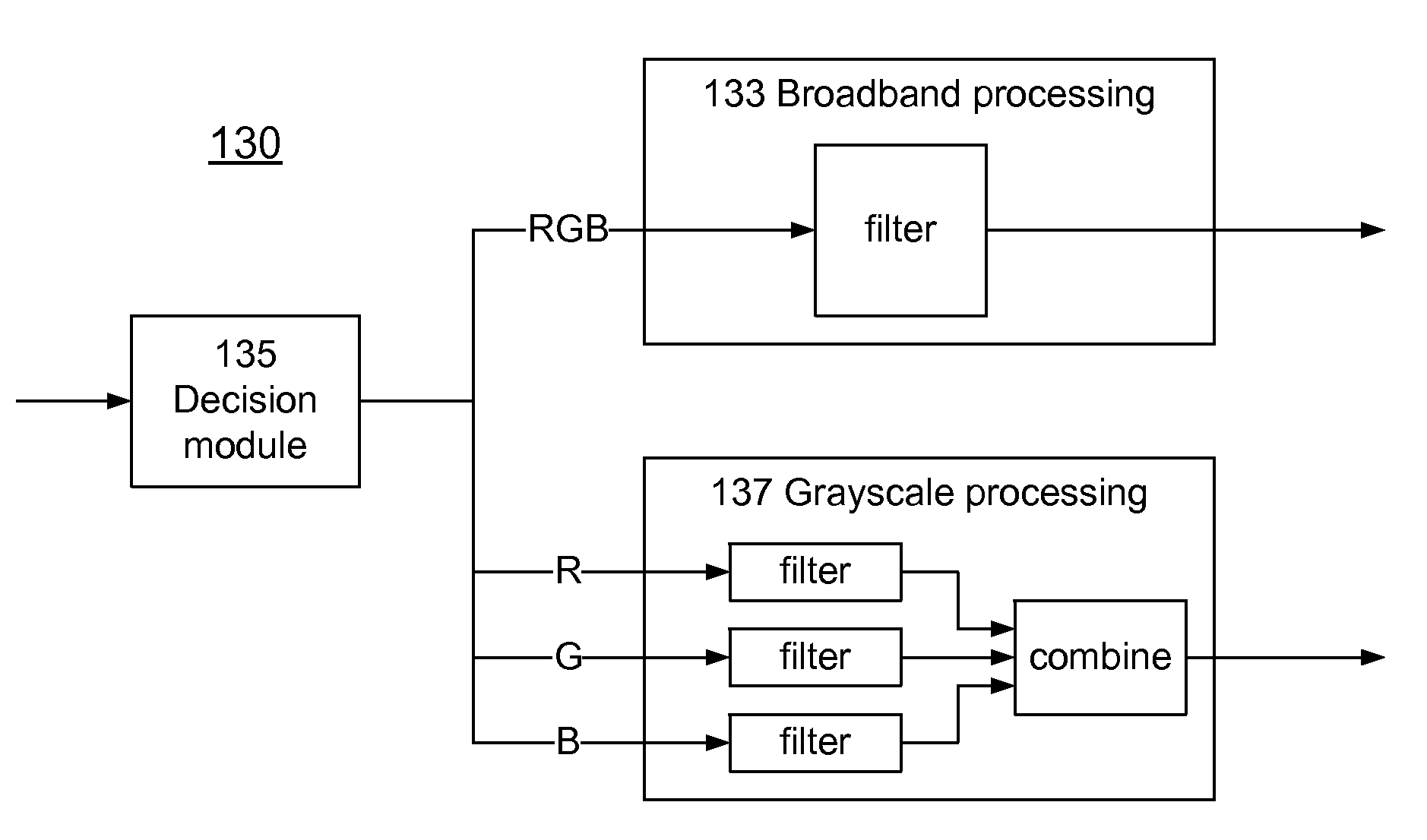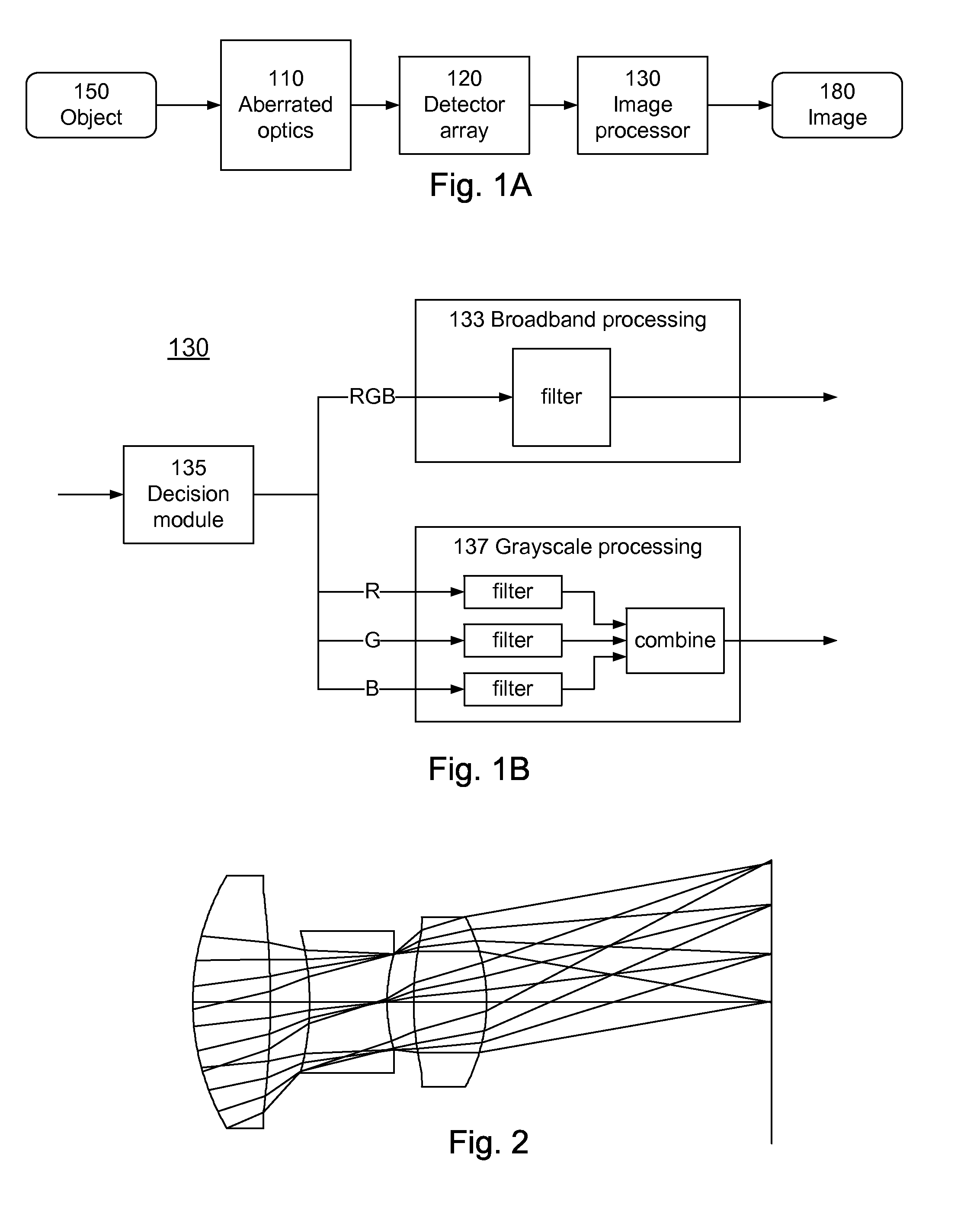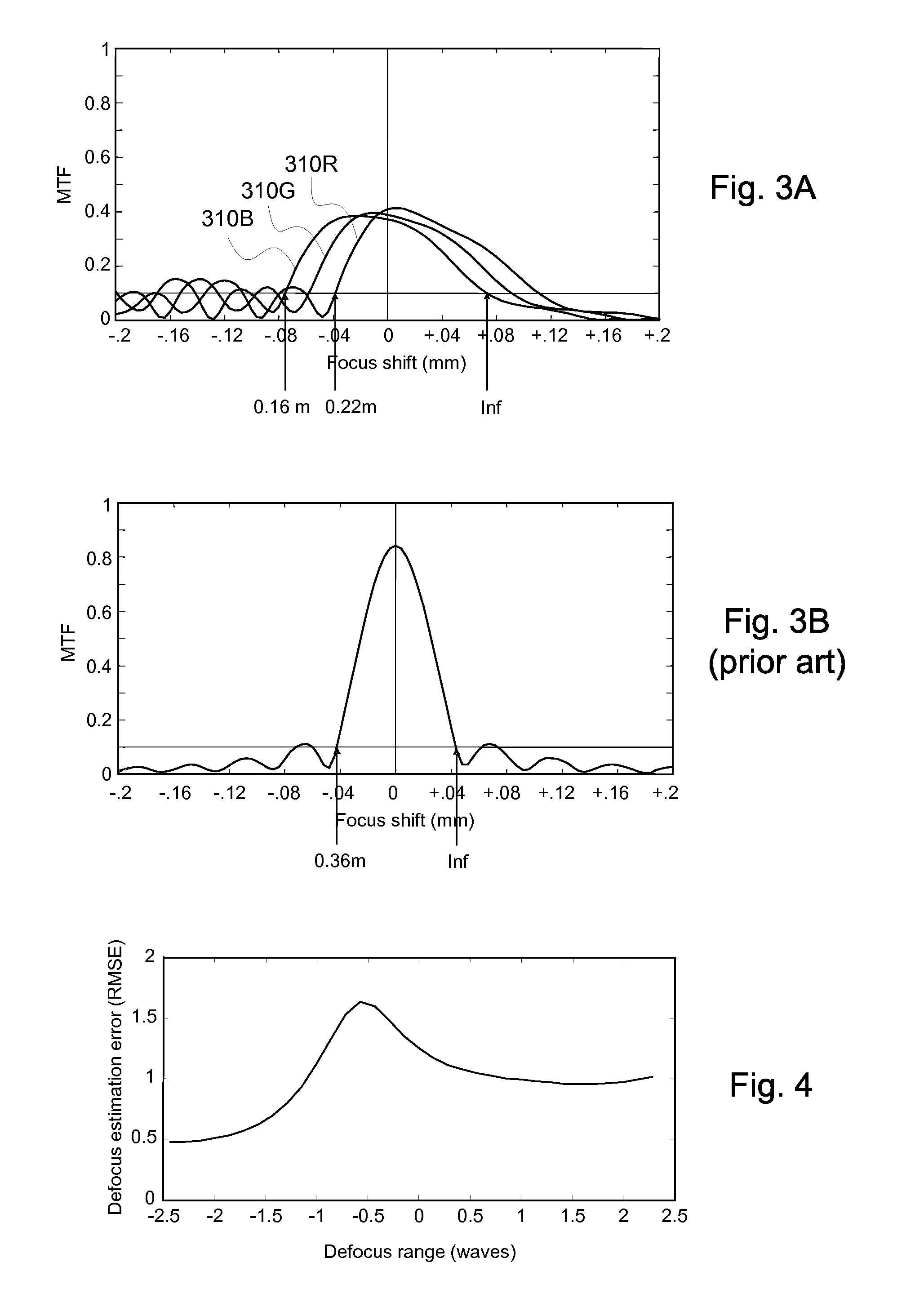Dual-Mode Extended Depth-of-Field Imaging Systems
- Summary
- Abstract
- Description
- Claims
- Application Information
AI Technical Summary
Benefits of technology
Problems solved by technology
Method used
Image
Examples
Embodiment Construction
[0021]FIG. 1 is a block diagram of a digital-optical imaging system according to the invention. The imaging system includes an optics module 110 (e.g., a lens assembly), a detector module 120 (e.g., CCD detector array) and an image processing module 130 (e.g., typically implemented in dedicated chips or software). As shown in FIG. 1B, the image processing module 130 can be operated in two different modes, which shall be referred to as broadband mode 133 and grayscale mode 137. A decision module 135 switches between the two modes. The imaging system produces a digital image 180 of an object 150.
[0022]The imaging system is “digital-optical” in the sense that optics 110 produces an optical image, but the optical image is not high quality. Instead, for reasons described below, the optical module 110 is intentionally aberrated, which results in a degraded optical image. The degraded optical image is captured by the detector array 120, and the captured image is digitally processed by the ...
PUM
 Login to View More
Login to View More Abstract
Description
Claims
Application Information
 Login to View More
Login to View More - R&D
- Intellectual Property
- Life Sciences
- Materials
- Tech Scout
- Unparalleled Data Quality
- Higher Quality Content
- 60% Fewer Hallucinations
Browse by: Latest US Patents, China's latest patents, Technical Efficacy Thesaurus, Application Domain, Technology Topic, Popular Technical Reports.
© 2025 PatSnap. All rights reserved.Legal|Privacy policy|Modern Slavery Act Transparency Statement|Sitemap|About US| Contact US: help@patsnap.com



